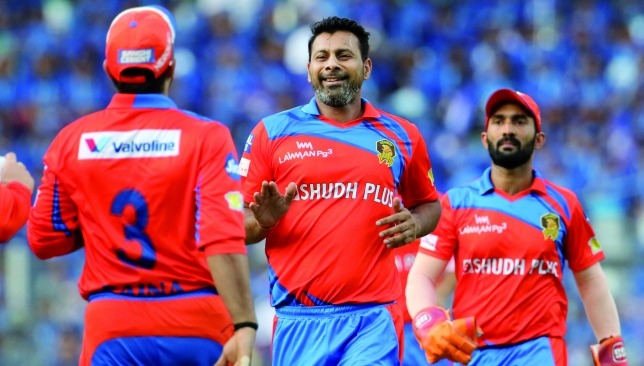
Something strange happened in the Gujarat Lions’ first two matches in this IPL season. The Rajkot-based team went in with an all-India attack against Kolkata Knight Riders and Sunrisers Hyderabad. It backfired spectacularly, as they lost by 10 and 9 wickets respectively. The Lions conceded 184 in 14.5 overs and 140 runs in 15.3 overs in the two games.
“We discussed this aspect, and possibly we have gone wrong with our team selection. But it is a group of talented individuals and these were just a couple of off-days,” said Lions’ opener Jason Roy. His words need to be pondered over.
The latter bit rings true for every team in this competition. The IPL is tough because it allows only four overseas players in the playing eleven. The eight captains are always battling to pick the right combination and so very often, they get it wrong.
Just ask Gujarat skipper Suresh Raina. He has had to pick between Roy, Aaron Finch, Brendon McCullum, Dwayne Smith, Dwayne Bravo and Andrew Tye this season. Or, Virat Kohli, who has to choose between Chris Gayle, Shane Watson, AB de Villiers, Samuel Badree, Tymal Mills, Adam Milne, Travis Head, Billy Stanlake and Tabraiz Shamsi.
Raina backed his mercurial batting line-up in the first two games and his punt didn’t work out. Thereafter, Raina picked Tye against Rising Pune Supergiant, and he responded with a hat trick as well as a match-haul of 5-17.
Elsewhere, Kohli is finding it hard to pick between bowling options and hard-hitting batsmen.
Not many IPL captains opt for an all-Indian attack in this tournament. The closest anyone came, and with some degree of success, was MS Dhoni who picked Ashish Nehra, Mohit Sharma/Ishwar Pandey, Ravi Ashwin and Ravindra Jadeja for Chennai Super Kings for most of the 2015 season. It was ‘almost’ an all-India attack, for Dhoni used Bravo as the death bowler.
The Lions gave it their all, but fell short by 21 runs in a high-scoring game in Rajkot.
— The Gujarat Lions (@TheGujaratLions) April 18, 2017
Congratulations @RCBTweets! #GameMaariChhe #GLvRCB pic.twitter.com/VSND2da3cW
Chennai finished runners-up that season as Mumbai Indians smacked their attack for 202 runs in the final at Kolkata.
It cannot be denied that Chennai’s two IPL wins came when their attack included some fine overseas picks – Doug Bollinger and Muttiah Muralitharan shared 27 wickets in 2010, while Bollinger and Albie Morkel 32 wickets in 2011.
The impact of overseas bowlers is interesting to note. Lasith Malinga, with 147 wickets (as of Wednesday) is the highest-ever wicket-taker in IPL history. In nine seasons, overseas bowlers have won the Purple Cap (most wickets in a season) six times. Coincidentally, on only two occasions – Sohail Tanvir (22 wickets for Rajasthan Royals) in 2008 and Sunil Narine (21 wickets for Kolkata Knight Riders) in 2014 – they have taken their teams to victory.
Meanwhile, on three occasions – Dwayne Bravo (32 and 26 wickets for Chennai Super Kings in 2013 and 2015 respectively) and Malinga (28 wickets for Mumbai Indians in 2011) – they have helped their respective teams finish runners-up. The question to ask is if this – the ‘overseas bowlers’ factor – guarantees some degree of success?
The answer is no. There are some odd instances herein. In 2012, Morne Morkel (Delhi Daredevils) finished top of the bowling charts with 25 wickets, but his side lost both their play-off matches.
Smiles all around after the #RoyalChallengers win in #GLvRCB. Visit our website for more photos. https://t.co/G61sfijkgt#PlayBold pic.twitter.com/EY0OBpNhb2
— Royal Challengers (@RCBTweets) April 19, 2017
In 2014 when Kings XI Punjab finished runners-up, their best bowlers Sandeep Sharma (18 wickets) and Axar Patel (17 wickets) were placed fifth and sixth in wicket-takers’ table.
The aim is find an optimal balance in the bowling attack and getting the four overseas picks right. So, who has got this formula right in the first two weeks this season?
The form of early pacesetters Kolkata and Mumbai reflects as much. Mumbai have Harbhajan Singh’s ability with the new ball (economy of 5.93 in 16 overs), while Kolkata have brought in Trent Boult and Chris Woakes for Eden Gardens’ fast pitches to balance their riches in spin.
Sunrisers’ Hyderabad have early contenders for the Purple Cap in Bhuvneshwar Kumar (15 wickets) and Rashid Khan (9 wickets). Delhi Daredevils though are a peculiar case. On the one hand, they had an excellent February auction, bringing Corey Anderson, Pat Cummins and Kagiso Rabada to bolster their attack. On the other hand, they dropped Shahbaz Nadeem (economy of 4.9 in 3 matches) in their last two outings. Against Kolkata, Nadeem was dropped in favour of pacer Mohammad Shami (0-28 in 3 overs). It was a strange error as they couldn’t defend 169 after reducing the Knight Riders to 21 for three.
The Daredevils paid the price of ignoring economy. It was a valuable lesson for anyone watching, particularly the likes of Gujarat Lions and Royal Challengers Bangalore currently struggling to balance their bowling attacks.
Meet @SunRisers' Bowling Musketeers - @BhuviOfficial, @MohammadNabi007 & @rashidkhan_19 - by @28anand https://t.co/ZJG5L5gyec #IPL #SRH pic.twitter.com/GI8KQFfxX5
— IndianPremierLeague (@IPL) April 18, 2017